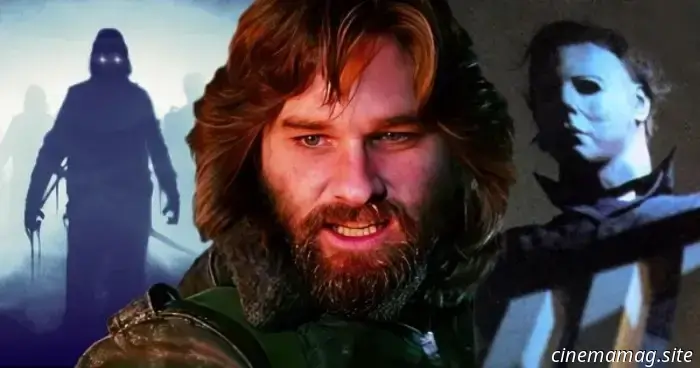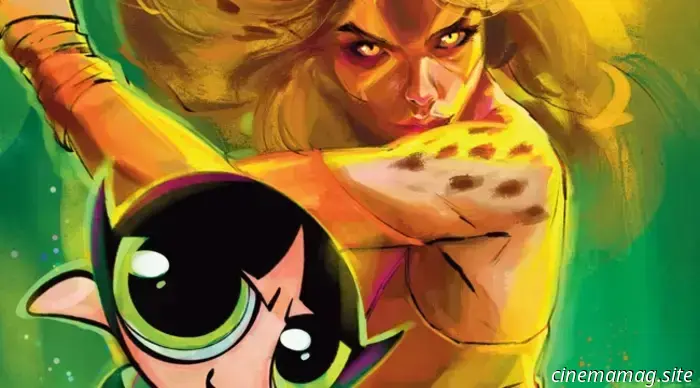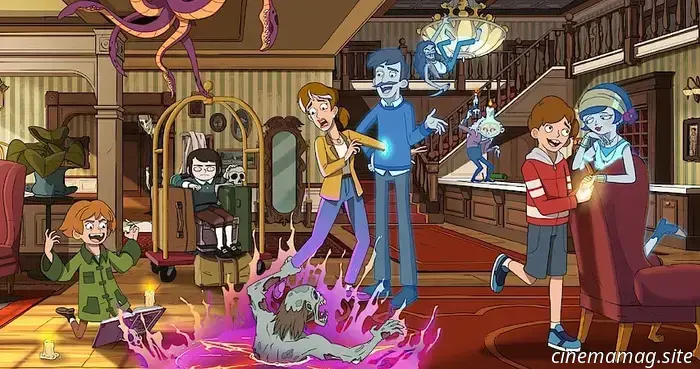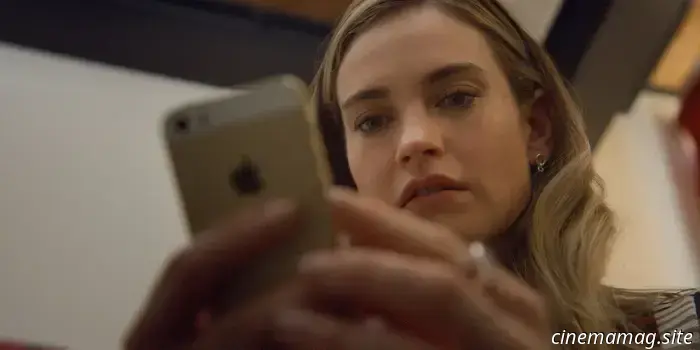
The Ascendancy of John Carpenter: Master of Horror
Simon Thompson examines the ascent of John Carpenter and his peak years during the 1970s and 80s.
John Howard Carpenter, a director, musician, and a doppelgänger of Master Roshi, is a legendary figure in cinema. His contributions have influenced countless creatives—filmmakers, musicians, writers, illustrators, and game designers alike—an achievement that few directors can claim.
Carpenter largely operates within genres that some elitist critics dismiss as lacking artistic merit. He once aptly summarized the critical perception of his work as: "In England, I’m a horror movie director. In Germany, I’m a filmmaker. In the US, I’m a bum." However, similar to Hitchcock and Roger Corman, a new generation raised on Carpenter's films has transformed the critical landscape, leading to him receiving the Golden Coach Award at the Cannes Film Festival, where he was celebrated as “a creative genius of raw, fantastic, and spectacular emotions.” Frankly, I couldn't agree more.
Born in 1948 in Carthage, New York, to Milton Jean Carpenter, a homemaker, and Howard Ralph Carpenter, a music professor, John moved from upstate New York to Kentucky at the age of 5 due to his father's job. He spent much of his childhood in a log cabin on the Western Kentucky University campus. Carpenter's fascination with cinema was ignited by westerns, especially those by Howard Hawks and John Ford, along with science fiction films; he was particularly captivated by Hawks' The Thing From Another World, Godzilla, and Forbidden Planet.
Eager to emulate his idols, he shot films with a Super 8 camera, creating a Godzilla homage in Claymation and a science fiction short called Terror From Space. After high school, he enrolled at Western Kentucky University for two years, majoring in English but knowing he wanted to become a filmmaker. Realizing Kentucky lacked the opportunities he sought, he moved to California in 1968 to attend the USC School of Cinematic Arts.
Just a year later, Carpenter completed his first student film, an eight-minute short named Captain Voyeur, which follows an office worker whose obsession with a female co-worker drives him to stalk her. In hindsight, Captain Voyeur showcases early signs of Carpenter's themes and stylistic trademarks, blending horror with comedy and addressing obsession—issues that would reappear in Halloween nearly a decade later.
His next film, The Resurrection of Bronco Billy (1970), a short western that he co-wrote, composed, and edited, marked his first notable achievement. The film tells the story of a young man (Johnny Crawford) in a modern city yearning to be a cowboy, and it earned an Academy Award for Best Live Action Short Film alongside a nationwide theatrical release from Universal.
Creating short films taught Carpenter the importance of concise storytelling and efficiency, which he applied to his debut feature, Dark Star (1974). A science fiction-comedy directed by Carpenter and co-written with his friend Dan O’Bannon, Dark Star follows a crew on a rundown spaceship whose mission involves destroying planets threatening galactic colonization.
Initially conceived as a 45-minute college project on a $6,000 budget with a crew primarily made up of students, Carpenter and O’Bannon managed to enlist renowned concept artist Ron Cobb and model designer Greg Jein to help give the film a surprisingly polished look for a low-budget production. Resourceful tactics were employed, such as using beach balls for alien props and tracking the camera with an open shutter to create the illusion of hyperspace travel.
In 1972, Carpenter and O'Bannon finished the first cut of Dark Star, but realized they needed significant investment to expand the film's runtime from its slim 45 minutes. Producer Jonathan Kaplan liked what he'd seen and provided them with $10,000, allowing them to shoot an additional fifty minutes for a total length of an hour and twenty minutes.
Thanks to O'Bannon's connection with John Landis, Dark Star gained a theatrical distribution deal with producer Jack H. Harris. Unfortunately, Harris was a tough producer, insisting on cutting nearly half an hour from the film, prompting extensive reshoots to restore it to feature film length. He also pushed for a marketable G rating, leading Carpenter to tone down language and obscure a wall adorned with nude centerfolds. O'Bannon struggled with the edits, feeling they transformed what could have been a remarkable student film into a lackluster professional effort.
At its Filmex premiere in Los Angeles, Dark Star was well-received by attendees. However, its official theatrical release in January 1975 did not share the same enthusiasm, with Carpenter and O’Bannon noting nearly empty screenings and no audience response to the humor. Critical reception wasn’t much better; Variety described it as a “limp parody of Stanley Kubrick’s 2001: A Space Odyssey” that only warranted attention for


























Other articles
 ThunderCats / The Powerpuff Girls #2 - Preview of the Comic Book
Dynamite Entertainment's crossover featuring ThunderCats and The Powerpuff Girls continues this Wednesday. Below, you can find an official preview for the second issue of this week... After being sent to Third Earth (where their abilities are ineffective) by the evil Mojo Jojo, the Powerpuff Girls have joined forces with local characters Snarf and […]
ThunderCats / The Powerpuff Girls #2 - Preview of the Comic Book
Dynamite Entertainment's crossover featuring ThunderCats and The Powerpuff Girls continues this Wednesday. Below, you can find an official preview for the second issue of this week... After being sent to Third Earth (where their abilities are ineffective) by the evil Mojo Jojo, the Powerpuff Girls have joined forces with local characters Snarf and […]
 Netflix's Haunted Hotel unveils its trailer for the adult animated series.
Netflix has unveiled a poster and trailer for Haunted Hotel, an adult animated comedy series created by Rick & Morty writer Matt Roller. The storyline follows a single mother as she attempts to manage The Undervale, a haunted hotel, with assistance from her estranged brother… who, coincidentally, is also deceased. The voice cast […]
Netflix's Haunted Hotel unveils its trailer for the adult animated series.
Netflix has unveiled a poster and trailer for Haunted Hotel, an adult animated comedy series created by Rick & Morty writer Matt Roller. The storyline follows a single mother as she attempts to manage The Undervale, a haunted hotel, with assistance from her estranged brother… who, coincidentally, is also deceased. The voice cast […]
-4K-Ultra-HD-Review.jpg) Blood Orange (1953) - An Evaluation of the 4K Ultra HD Version
Blood Orange, 1953. Directed by Terence Fisher. Featuring Tom Conway, Mila Parély, Naomi Chance, Michael Ripper, Eric Pohlmann, Richard Wattis, and Roger Delgado. SYNOPSIS: A private investigator looking into a jewel theft gets entangled in a double homicide. In Blood Orange (also known as 3 Steps To Murder), private investigator Tom Conway (played by Tom Conway) is employed by Mr. […]
Blood Orange (1953) - An Evaluation of the 4K Ultra HD Version
Blood Orange, 1953. Directed by Terence Fisher. Featuring Tom Conway, Mila Parély, Naomi Chance, Michael Ripper, Eric Pohlmann, Richard Wattis, and Roger Delgado. SYNOPSIS: A private investigator looking into a jewel theft gets entangled in a double homicide. In Blood Orange (also known as 3 Steps To Murder), private investigator Tom Conway (played by Tom Conway) is employed by Mr. […]
 LEGO introduces its Advent Calendar sets for 2025.
The LEGO Group has introduced this year's collection of Advent Calendars for the themes of Star Wars, Harry Potter, Disney's Frozen, Minecraft, LEGO City, and LEGO Friends, scheduled to be available for purchase starting September 1st; take a look at the promotional images and information here… Let children enjoy hours of festive entertainment by building their very own droidsmith workshop […]
LEGO introduces its Advent Calendar sets for 2025.
The LEGO Group has introduced this year's collection of Advent Calendars for the themes of Star Wars, Harry Potter, Disney's Frozen, Minecraft, LEGO City, and LEGO Friends, scheduled to be available for purchase starting September 1st; take a look at the promotional images and information here… Let children enjoy hours of festive entertainment by building their very own droidsmith workshop […]
 In the trailer for Swiped, Lily James portrays Whitney Wolfe, the founder of Bumble.
Before its world premiere at the Toronto International Film Festival this September, 20th Century Studios has released the first trailer and a poster for the forthcoming drama Swiped. Directed by Rachel Lee Goldenberg, the film follows the story of Whitney Wolfe (portrayed by Lily James), the youngest self-made female billionaire and the founder of […]
In the trailer for Swiped, Lily James portrays Whitney Wolfe, the founder of Bumble.
Before its world premiere at the Toronto International Film Festival this September, 20th Century Studios has released the first trailer and a poster for the forthcoming drama Swiped. Directed by Rachel Lee Goldenberg, the film follows the story of Whitney Wolfe (portrayed by Lily James), the youngest self-made female billionaire and the founder of […]
.jpg) Film Review - East of Wall (2025)
East of Wall, 2025. Directed and written by Kate Beecroft. Featuring performances by Tabatha Zimiga, Porshia Zimiga, Scoot McNairy, Jennifer Ehle, Jesse Thorson, Chancey Ryder Witt, Clay Pateneaude, Leanna Shumpert, Brynn Darling, Wyatt Mansfield, Stetson Neumann, Traden Lockwood, Don Gummer Garnier, Renee Mousseaux, Brett Fly Sr., Ryan Caraway, Haley Strode, Lori Ann Reed, Amy Shedeed, Angela Heinze, […]
Film Review - East of Wall (2025)
East of Wall, 2025. Directed and written by Kate Beecroft. Featuring performances by Tabatha Zimiga, Porshia Zimiga, Scoot McNairy, Jennifer Ehle, Jesse Thorson, Chancey Ryder Witt, Clay Pateneaude, Leanna Shumpert, Brynn Darling, Wyatt Mansfield, Stetson Neumann, Traden Lockwood, Don Gummer Garnier, Renee Mousseaux, Brett Fly Sr., Ryan Caraway, Haley Strode, Lori Ann Reed, Amy Shedeed, Angela Heinze, […]
The Ascendancy of John Carpenter: Master of Horror
Simon Thompson examines the ascent of John Carpenter and his most influential years during the 1970s and 80s. Director, musician, and a resemblance to Master Roshi, John Howard Carpenter is a legendary figure. Carpenter’s creations have inspired countless artists, including filmmakers, musicians, writers, illustrators, and game designers – a legacy that is very […]
